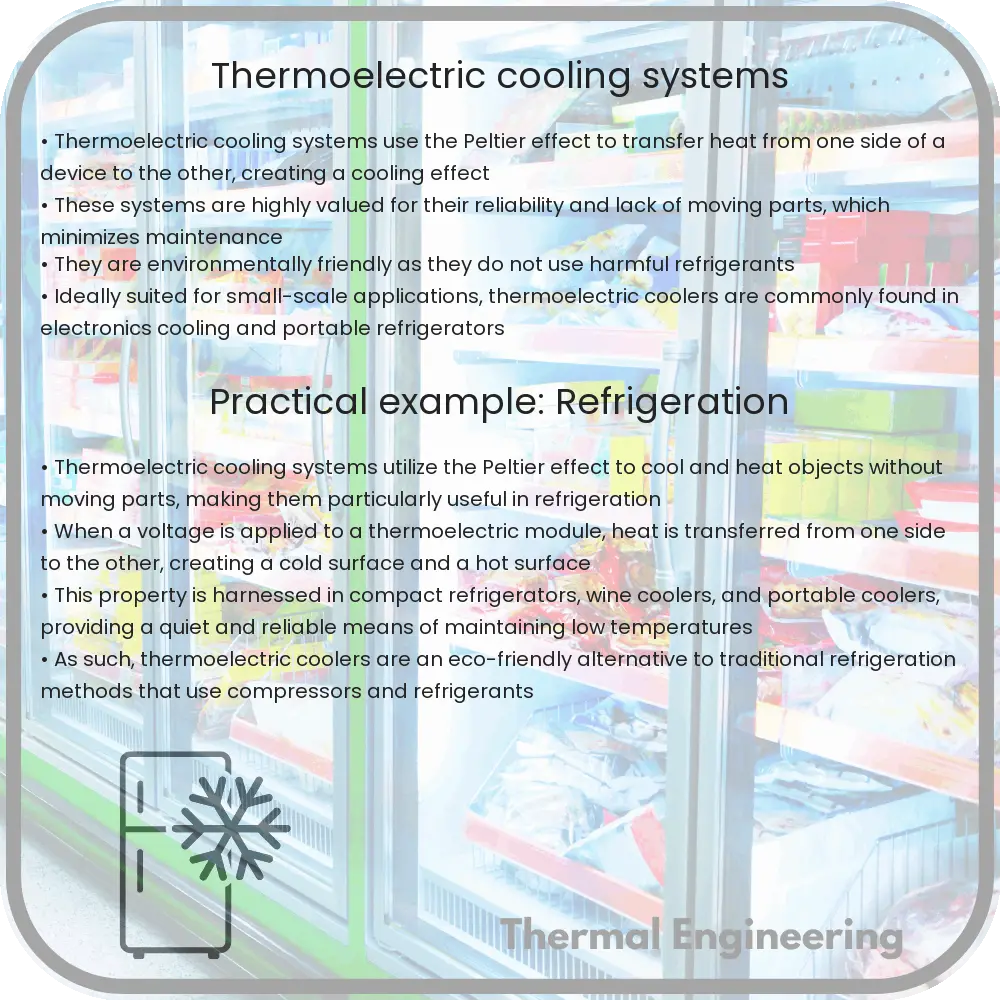Learn about thermoelectric cooling systems, including how they work, applications, and their advantages and disadvantages.

Understanding Thermoelectric Cooling Systems
Thermoelectric cooling systems, also known as thermoelectric coolers (TEC) or Peltier coolers, operate on the Peltier effect, which is the occurrence of heating or cooling at an electrified junction of two different conductors. These systems are popularly used in electronic devices, wine coolers, and even some precision scientific instruments, providing a compact and reliable method of temperature control.
How Does a Thermoelectric Cooler Work?
At the heart of a thermoelectric cooling system is the Peltier module, which consists of several Peltier cells sandwiched between two ceramic plates. Each cell contains a junction of two different types of semiconductors, typically bismuth telluride or antimony bismuth telluride, connected electrically in series and thermally in parallel.
When a direct current (DC) is applied across the module, the Peltier effect kicks in, causing heat to be absorbed at one junction (the cold side) and released at the opposite junction (the hot side). This occurs because the current forces heat to transfer from one semiconductor to another, across the junction. As a result, one side of the Peltier module becomes cold, while the other side heats up rapidly.
The Role of Heat Sinks
The efficiency of a thermoelectric cooler greatly depends on how effectively the heat is removed from the hot side of the module. This is typically achieved using heat sinks, which are required to dissipate the heat away from the device. Without effective heat sinks, the Peltier module itself would quickly become saturated with heat, severely diminishing its cooling capability or even reversing its effect.
Applications of Thermoelectric Coolers
- Electronic Components: Thermoelectric coolers help maintain optimal operating temperatures in processors and laser diodes, enhancing performance and longevity.
- Medical Applications: TECs are used in medical devices requiring precise temperature control, such as temperature-controlled seats and beds.
- Portable Coolers: These systems are ideal for small, portable coolers, being more compact and having fewer moving parts than traditional refrigeration units.
- Automotive: Increasingly used in car seats to provide cooling or heating, improving comfort for passengers.
Advantages and Disadvantages of Thermoelectric Coolers
Thermoelectric coolers offer several benefits:
- Compact and Lightweight: TECs are smaller and lighter compared to traditional cooling methods which makes them ideal for applications where space and weight are critical constraints.
- Reliability and Longevity: With no moving parts or fluids, TECs are more reliable and require less maintenance over their operational lifetime.
- Precise Temperature Control: They can achieve very precise temperature control, which is crucial in many scientific and industrial applications.
However, there are some drawbacks:
- Energy Efficiency: TECs generally have lower energy efficiency compared to conventional refrigeration methods, especially at larger scales.
- Heat Dissipation Challenges: Effective dissipation of heat from the hot side is crucial and may require additional components or systems, increasing complexity.
Conclusion
Thermoelectric cooling systems offer a unique set of capabilities that make them suitable for niche applications where space, weight, and precise temperature control are paramount. While they may not replace traditional cooling methods in all applications due to their energy efficiency and heat dissipation challenges, they continue to be invaluable in many small-scale cooling applications across various industries.